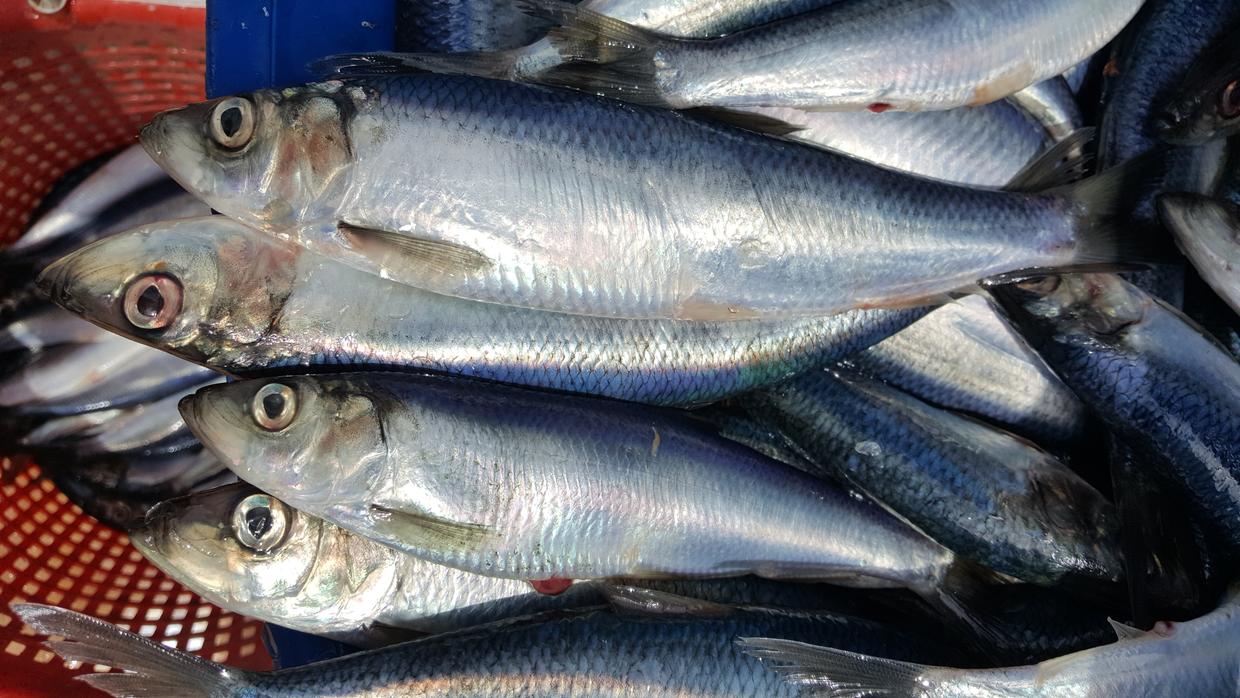The New England Fishery Management Council voted this week to approve a new management approach to the region’s Atlantic herring fishery that will significantly scale back catch limits for the species over the next three years.
Based on the council's latest stock assessment, recruitment numbers were lower than the previous low point in the 1970s when record catches essentially wiped out the fishing. Assessments show that recruitment numbers have been well below average for the species since 2013.
The regulation change, called Amendment 8, has been in the works for several years. The herring committee created nine alternatives for the management plan, ranging from taking no action on the previous management plan to a 50-nautical-mile prohibition on all midwater trawling gear.
The council decided to approve an allowable biological catch control rule, a revised version of Alternative 4B, which will slash the total allowable catch of herring from 49,900 tons to 21,266 tons in 2019. The 2018 total of 49,900 tons was already slashed from the year’s original ACL of 110,500 tons of Atlantic herring. A shortage in herring landings also means a shortage of lobster bait throughout New England.
“There’s no one that has more at stake,” said Patrice McCarron, executive director of the Maine Lobstermen’s Association. “The lobster industry has already been dealing with issues related to bait, and the latest decision by the council will likely cause those problems to be even worse."
The Gulf of Maine herring fishery was shut down by the Atlantic States Marine Fisheries Commission for much of September as the fleet neared its catch limit.
“We lose that bait, it’s fresh herring, that’s landed locally, during peak lobster landings,” said Patrice McCarron, executive director of the Maine Lobstermen’s Association. "The industry uses millions of pounds more than the new current allowable catch will provide. We manage to cut half of our use, we’re still 40 million pounds of bait short. If you do get bait, you’re going to be on rations, and the price is going to skyrocket.”
In addition to the control rule, the council also approved having the new control they set be used for the ABC every three years. Each year, the ABC could be different, and would be set based on the most recent herring assessment and short-term projections of the stock.
“The lobster industry will bear the brunt of all the decisions that are made here,” said Beth Casoni, executive director of the Massachusetts Lobstermen’s Association.
The council also moved to restrict midwater trawling in a 12-nautical-mile buffer zone — starting at Montauk Lighthouse in New York and running to the eastern border of Maine — that would prohibit all midwater trawling for herring. An additional amendment added prohibitions in two areas, 113 and 99, in Herring Management Areas 1B and 3. Those prohibitions will be year-round if approved.
New England council surveys indicated that 75 percent of the midwater trawl fishery was coming from within the 12-nautical-mile zone that would be prohibited.
"Vessels that operate midwater trawlers are going to lose about 75 percent of their historic fishing grounds because of a new buffer that we feel has no scientific basis or justification,” Ryan Raber, who owns a bait company based in Portland, Maine, with his sister, Suzannah Raber, told the Portland Press Herald. "We'll probably wind up challenging it in court."
The new rules were applauded by environmental organizations like the Conservation Law Foundation and Pew Charitable Trusts.
“New England managers deserve credit for being among the first to follow a public, science-based process with concrete actions to conserve forage fish,” said Peter Baker, director of U.S. Ocean Conservation-Northeast for the Pew Charitable Trusts. “Protecting these sensitive areas from intensive fishing and rebuilding the herring population will directly benefit marine wildlife and the coastal businesses that depend on them.”
In coastal towns where working waterfront businesses are struggling to hold their ground, these rules will make it harder to stay afloat.
“I am worried,” Suzannah Raber told the Press Herald. “I know we'll get through this. We've had rough years. But I'm really worried about other people in the industry that are going to lose their jobs. It's devastating."
The council’s decisions still need to be finalized by NMFS, which could take until mid-2019.







